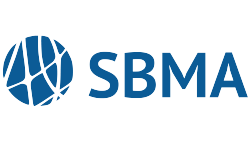FAQs: ACA and ALEs – What You Need to Know
As an ALE, understanding the regulations set forth by the Affordable Care Act (ACA) can be a daunting task. The employer mandate, minimum essential coverage (MEC), minimum values, and affordability are all crucial guidelines that must be understood to avoid penalties.
In this blog, we will answer some frequently asked questions about ACA and ALEs to help you stay informed and compliant. We will cover topics such as what is an ALE, how to calculate workforce size, common ownership impact on ALE status, timing impact on ALE status calculation, the employer mandate, minimum essential coverage, and more. So, let’s get started!
First, What is an ALE?
An ALE, or applicable large employer, is a company or organization that employs at least 50 full-time equivalent (FTE) employees. The IRS defines a full-time employee as someone who works at least 30 hours per week or 130 hours of service per calendar month.
Even if a company doesn’t have 50 full-time employees at all times, it just needs to average at least 50 FTEs per month in the current calendar year to be considered an ALE for the following calendar year.
How Does an Employer Calculate Workforce Size to Determine if They’re an ALE?
To determine if your company is considered an ALE, you must add the number of full-time employees and the full-time equivalent of your part-time employees. only U.S employees should be counted.
To calculate the full-time equivalent of your part-time employees, take the total hours worked by all part-time workers in a month and divide by 120. Then add this number to the total number of full-time employees to get your total FTE count. If you have seasonal workers, they must be included in the FTE count, but you may be able to apply for an exemption if their hours cause the count to exceed 50 or more.
You are eligible for the seasonal worker exemption if you meet the following conditions:
- Your total number of full-time employees (including FTEs) exceeds 50 for a maximum of 120 days in a calendar year.
- The excess employees during this period are considered seasonal workers.
How Does Common Ownership Impact ALE Status?
To determine if a group of businesses are considered an ALE, they must be evaluated together as a controlled group. This applies even if the businesses are separate legal entities. If the controlled group is determined to be an ALE, each individual business within the group is considered an ALE, regardless of the total number of employees and is subject to the employer shared responsibility provisions (ESRP) of the ACA.
How Does Timing Impact ALE Status Calculation?
When determining ALE status, it is important to consider the preceding calendar year. Employers who were established during part of the previous year will have their calculations adjusted accordingly. New businesses that did not exist on any day in the previous year will be considered an ALE if they anticipate and do employ an average of 50 or more full-time employees, including full-time equivalentsduring the current calendar year.
What is the Employer Mandate?
The employer mandate, also known as the Employer Shared Responsibility Provisions (ESRP), is a requirement under the Patient Protection and Affordable Care Act (ACA) that applies only to businesses that are considered Applicable Large Employers (ALEs). These employers are required to offer health insurance coverage that meets minimum essential coverage (MEC) and is considered affordable to their full-time employees and their dependents, or they may face penalties.
Businesses that do not qualify as ALEs are not subject to these requirements or penalties. Only full-time employees, not full-time equivalents, are counted for the purpose of calculating penalties and the first 30 full-time employees are not factored into the calculation.
What is Minimum Essential Coverage?
The Affordable Care Act (ACA) requires that ALEs provide a minimum level of health insurance coverage, known as minimum essential coverage (MEC), to at least 95% of their full-time employees. This is to avoid paying penalties under the employer shared responsibility provisions (ESRP).
To meet this requirement, ALEs must offer their employees the opportunity to enroll in a health insurance plan that meets the standards set forth by the ACA, such as those offered in the small or large group market, grandfathered health plans, or certified by the Health Insurance Marketplace.
How is Affordability Defined and Calculated?
To be considered “affordable” under the Affordable Care Act, a health plan’s cost for an employee cannot exceed 9.12% of their annual household income in 2023. This calculation is based on the employee’s salary and the lowest cost silver plan available for their age and location.
Does the Employer Mandate Require Coverage be Offered to Dependents?
The employer mandate under the ACA stipulates that ALEs must provide qualified and affordable health coverage options to their employees and their eligible dependents. According to the mandate, dependents are defined as an employee’s child under the age of 26, including adopted or placed for adoption children. It should be noted that spouses, stepchildren, foster children, or non-U.S. citizen children not living in the U.S. or a contiguous country do not fall under the definition of dependents.
When Would an Employer be Subject to Potential Employer Shared Responsibility Penalties?
There are two types of financial penalties for ALEs (Applicable Large Employers) under Section 4980H of the Internal Revenue Code. The first penalty (4980H(a)) applies to ALEs that do not offer Minimum Essential Coverage (MEC) to at least 95% of their full-time employees and dependents. The second penalty (4980H(b)) applies to ALEs that do not offer affordable coverage to their full-time employees and dependents.
If an ALE fails to meet these requirements and at least one full-time employee receives federal subsidies, such as premium tax credits for purchasing essential coverage through the Marketplace, the ALE will be subject to penalties.
How Much are the Penalties for Failing to Meet the Employer Mandate?
The IRS updates the penalties for employer mandates annually. In 2023, the penalties are as follows:
- Section 4980H(a) penalty: ALEs that do not provide Minimum Essential Coverage to 95% of full-time employees will face a penalty of $2,880 per full-time employee.
- Section 4980H(b) penalty: ALEs that do not offer affordable or minimum value coverage will face a penalty of $4,320 per full-time employee.
These penalties may be adjusted based on the number of employees who received subsidies for coverage and how many months employees were not covered. The IRS will apply the higher penalty of the two options, meaning that both penalties cannot be imposed simultaneously.
Still Have Questions?
The best way for employers to remain compliant with healthcare laws is to consult with a team of professionals. Our team at SBMA understands the ACA and can help you stay up-to-date on any changes to the law.











